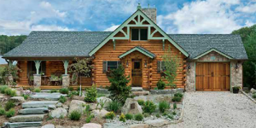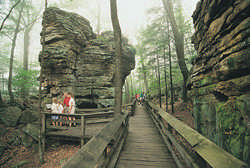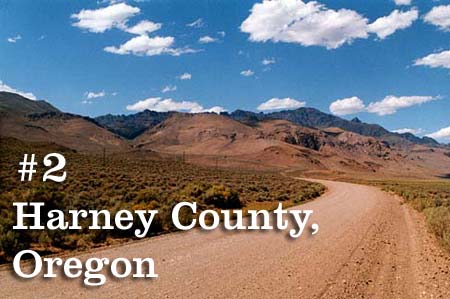
Will you be able to build the log home you want on the property? Does the water body offer the recreation opportunities you enjoy? Are you prepared to deal with the special responsibilities and costs associated with waterfront living? Answering these questions must be part of your research process.
From a practical standpoint, you want to be sure you are building your dream home on solid ground that won't cause structural problems down the road. At the same time, you should make sure you are on solid legal footing because wetland and shoreland laws may restrict what can be built on the property or you may be setting yourself up for disappointment.
Types Of Waterfront Property
Waterfront property isn't limited to parcels "on" the water. In today's real estate market, waterfront encompasses a wide range of properties, including:
- oceanfront lots
- lakeshore or seashore lots
- lots abutting rivers or streams
- lots on canals or bayous
In addition, parcels that contain a small lake or pond are often included in the waterfront category since the land owner would have the opportunity to build on that body of water.
When choosing the type of water you want on or near your property, you have to think about your lifestyle, how you want to use or enjoy the water and how the water body will affect things like insurance and liability issues.
Lifestyle & Use Considerations
One very basic lifestyle consideration is tied to how you plan to use the body of water. Not only will this play a large role in which type of waterfront property you choose, but in some instances it will immediately limit the areas of the country where that type of property is available. Obviously you won't find an oceanfront lot in Arizona, but you probably will have the best selection of lakeshore lots in the country if Minnesota is where you want to build.
Then there are purely practical matters. If a sailboat is part of your plans, you will need direct access to deep water. If you want to waterski, you do not want to build on a lake or river with no-wake rules. If fishing is your game, you want a lot on a more secluded lake or river so you're not competing with public users. If you want to swim, you need to find out if the state, county or local authority will let you build a dock or float a raft on the water. You also need to consider the water's natural characteristics. A lake will be still and quiet; at the ocean, you'll hear the sound of waves crashing against the beach. And then there's the water itself; you can find fresh water lakes and streams, brackish water in bays and canals, and salt water in the ocean.
Laws & Regulations
Laws pertaining to waterfront property strive to balance private and public access and use. In Wisconsin, for instance, court rulings have repeatedly reinforced the property owner's right to "reasonable use" of their shoreline but only when balanced with -- and subordinate to -- public rights.
Since even the smallest development action affects the quality of the swimming, fishing and wildlife watching on water -- the very attributes that bring most people to purchase waterfront property in the first place -- most states and municipalities have taken steps to regulate development on their waterways. Shoreline activities and development in shallow water and wetland areas are subject to environmental review and must qualify for a permit before action can be taken. Some property may be governed by federal shoreland rules as well. Asking the seller about restrictions and researching them yourself can mean the difference between enjoying the property and years of frustration.
Before you sign the papers on any waterfront property, contact the state's department of natural resources or its equivalent. Its stewards, sometimes called wardens, can advise you on the setbacks, development and runoff limitations and waste disposal requirements that will ultimately determine how you build on the property. Contact the local building permit office to determine what local restrictions apply to the property. In many cases, local guidelines expand the protections offered by state regulations.
Practical Considerations
Laws that protect wetlands, lakes and rivers may limit construction or modifications you can make on/to your land and to shallow water areas on it. Stan-dards created to guide development along lakes and rivers often establish how far homes need to be set back from the water's edge. So if your parcel is 200 feet deep and you need to keep your log home at least 100 feet from the shoreline, you will quickly run out of room for the house and driveway -- or you may find yourself building much closer to the road than you would like.
Federal, state and local guidelines may determine how you amend your property. They may limit how many plants or trees can be removed from the property and what kind of plantings you can add. Even if law permits the alterations you wish to make, you may not be able to afford performing them within the guidelines.
There are plenty of practical construction issues to consider as well. Building on wet soils may cause structural failures such as cracks in foundation walls and water problems in the basement. Or you may not be able to have a basement at all. And as a log home owner, a consistently damp environment will require vigilant attention to the health of your home's logs to ward off mold, mildew and the threat of rot.
Financing Issues
Simply put, waterfront property is more expensive than traditional property. After all, you arenÕt just buying a piece of land; you are buying access to the many recreational opportunities offered by life on the water.
That being said, there is one financial challenge you may not realize you face: prequalification. Many brokers will only show waterfront properties to parties that have been prequalified by their lender, so you may want to consider prequalifying before you start shopping for property.
Other financial considerations include lawyers' fees and other costs associated with researching regulations and applying for usage permits, additional costs associated with property maintenance and the higher cost of property insurance. And finally, make sure you can afford the boats, jet skis and other "toys" you want to use on the water after your live there. You don't want to invest so much in the property that you can't afford to enjoy it.
For more information on building your home near the water, check out the July 2004 issue of Log Home Design Ideas.
|












